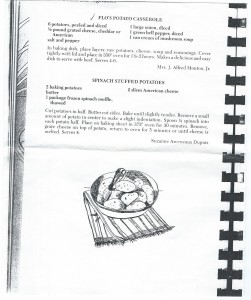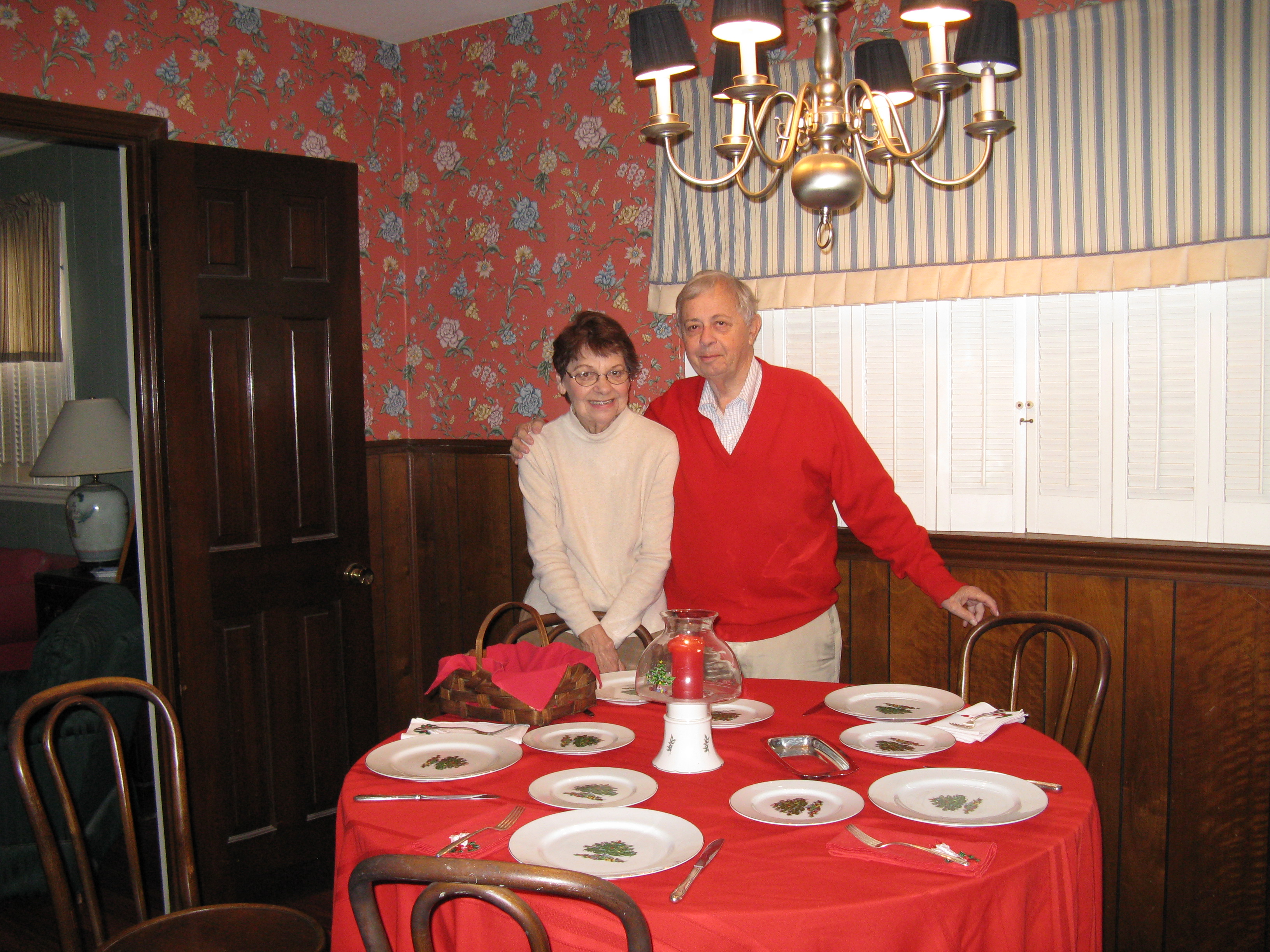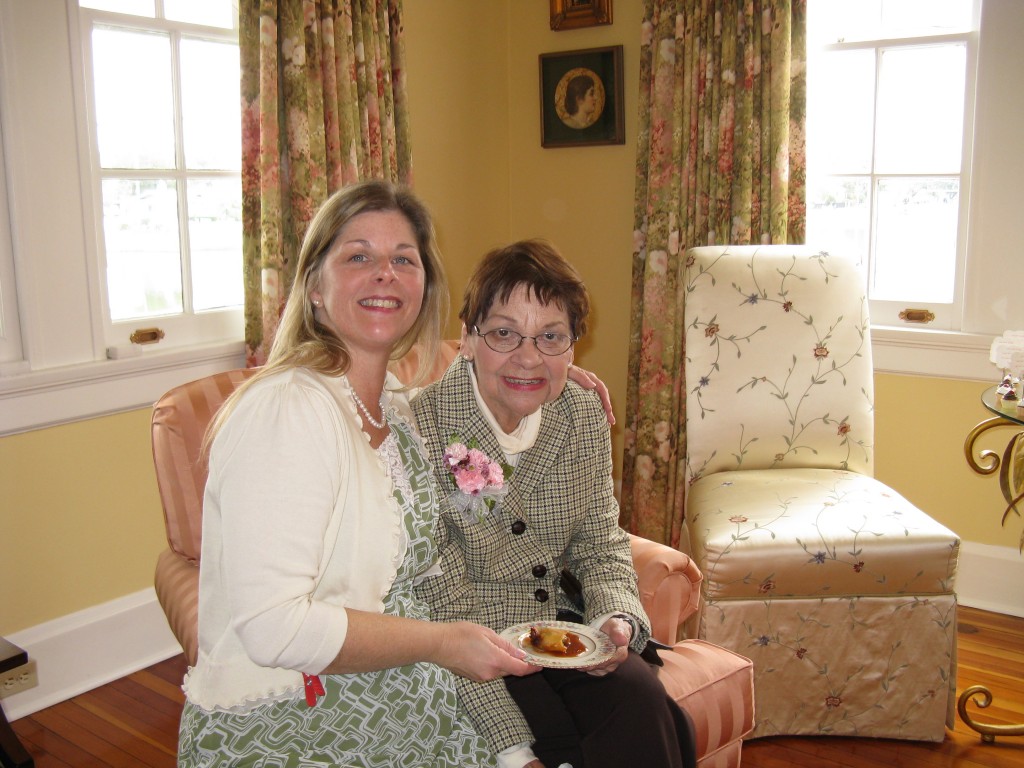From Surviving to Flourishing: Using Narrative as a Tool for Patient-Centered Care
By Alison Cogan, PhD (cand.), OTR/L
Abstract
Rehabilitation practice aims to restore people to health after injury or illness. Health involves not only managing the technical aspects of treating the condition, but also living a good and personally fulfilling life. In addition to biomedical management, attention to flourishing – or fulfillment of one’s potential – requires intentional and individualized intervention. Clinicians can use narrative to better understand patient needs and values to encourage such a patient-centered approach to care. The purpose of this article is to describe the benefits of developing skills for understanding and interpreting stories, i.e. “narrative competence”, through reading and analyzing published first-person illness narratives. I will illustrate this approach by examining a story about a journey excerpted from memoirs written by a patient and caregiver dyad; then, contrasting between biomedical and narrative analyses of the story, demonstrate how the latter can enhance clinical reasoning for rehabilitation practice. This approach has the potential to generate new skills for rehabilitation clinicians that can help all patients flourish, regardless of disability.
Key words: Narrative, patient-centered care, competencies, clinical reasoning
A life that is not fully narratable is vulnerable to devaluation. Certainly stories told about categories of persons can injure those persons. But silences can be equally injurious, implying that there is no story to tell about lives such as these. Resistance to these silences begins by making lives narratable: telling the stories can make lives vivid and morally recognizable.1(p 75)
What is Narrative and Why Does it Matter in Rehabilitation?
Narratives, or stories, are a means of organizing lives and experiences into a recognizable structure. Sharing stories is essential to the human experience – it is how we communicate with one another and make sense of the world around us. As sociologist Arthur Frank explained in the above quote, the telling of a story about a person or group is a way of valuing them by making their life visible to others. In rehabilitation practice, narrative thinking offers a way for clinicians to better understand and connect with their patients.
The goal of rehabilitation is to restore individuals to health after they experience disease, injury, or disability. Often, interventions focus on building the technical skills for daily living with medically complex conditions such as stroke, brain injury, or spinal cord injury. Seemingly mundane acts such as transferring from a bed to a wheelchair, bathing, and dressing need to be relearned for survival.2,3 However, technical competence in executing these and other activities of daily living is insufficient to empower a person to flourish because they do not, on their own, imbue life with meaning. How can rehabilitation providers help people with medically complex conditions prepare for living a good life? Anthropologist Cheryl Mattingly argues that what constitutes a good life cannot be determined by cultural norms, but instead is deeply personal.4 Therefore, care oriented toward supporting patients to live well must also be very personalized. In this paper, I argue that skills for interpreting stories give rehabilitation clinicians tools to provide more patient-centered care, and that these skills can be developed by reading first-person illness narratives.
What Does it Mean to Flourish?
Since rehabilitation is concerned with restoring patients to health so that they can actively participate in their lives, the concept of flourishing is relevant in treatment planning and delivery. The term “flourish” comes from Aristotle’s conceptualization of eudaimonia. Ryff and Singer described the essence of eudaimonia as “striving toward excellence based on one’s unique potential.”5 (p14) Distinct from happiness or hedonic well-being, eudaimonic flourishing is an ongoing process of fulfilling one’s “best good”, rather than an emotion or an outcome.6 Ryan, Huta and Deci have argued that defining health in eudaimonic terms is desirable and has the potential to contribute to both individual and societal well-being.7 Flourishing is also closely related to the concept of patient-centered care, an approach in which treatment is a collaborative effort between provider and patient, and patients’ perspectives and knowledge are valued by the provider.8,9 If we want to practice patient-centered rehabilitation, we need to be aware of each person’s unique capabilities, goals, and potential. We can access this information through connecting with patients’ stories.
I was inspired to examine this topic by a course in my doctoral training on narrative and disability with distinguished anthropologist Cheryl Mattingly. During my clinical training in occupational therapy, I struggled to understand why some of my patients made decisions about their lives that seemed inconsistent with their rehabilitation goals. Narrative opened up alternative ways to consider the choices people made in determining what was best for them at the time. Stimulated by my experience studying with Dr. Mattingly and first-person accounts of disability that I had read, I wanted to explore how narrative could be used explicitly and systematically in clinical training and professional development for rehabilitation.
Narrative Competence
Founder of narrative medicine and literary scholar Rita Charon defines narrative competence as “the capacity to recognize, absorb, metabolize, interpret, and be moved by stories of illness”.10 The skills associated with narrative competence can facilitate a patient-centered approach to clinical reasoning in rehabilitation that emphasizes not only surviving an illness or disability, but flourishing in its aftermath. Charon categorizes the skills of narrative competence into textual, creative, and affective domains (Table 1) and suggests that they could be cultivated through reading literature.11 In medical education, the practice of reading literature has been increasingly incorporated into curricula since the 1970s to help build these skills.12,13 Students who complete coursework that incorporates literature and medicine have later reported increased capacities for empathy and patient-centeredness in clinical encounters.14
Charon suggests that the stories we read become part of our memory banks and allow us to take fresh perspectives on subsequent stories that present in clinical scenarios.15 Autobiographical accounts of living with illness or disability can be useful tools in developing our memory banks by contextualizing a medical condition within a person’s life story.
When patients or family caregivers write accounts of their illness experiences, readers have an intimate and urgent role to play in response. Neither casual nor coy, these texts are asking something of their readers, asking for witness, for presence, for answer.10(p 1266)
Narrative competence enables clinicians to consider life from their patients’ perspectives, thereby facilitating personalization of care, in addition to meeting patients’ physiological needs associated with their medical conditions. By reading first-person illness narratives, the reader-clinician is obliged to investigate the patient experience from an insider’s point of view and begins to practice narrative competence within the story, thereby honing capacities that can later be transferred to clinical encounters.
Table 1: Narrative Competence
| Skill Group | Competencies |
| Textual | Identifying of story structure
Adopting of multiple points of view with a story Recognizing metaphors and allusions |
| Creative | Imagining multiple interpretations
Building curiosity Hypothesizing different endings |
| Affective | Tolerating uncertainty
“Entering the story’s mood” |
Methods
To illustrate how narrative competence can facilitate clinical reasoning that fosters flourishing, I will explore a story about a person with disability taking a vacation, excerpted from two memoirs. The first, A Second Wind, was written by Philippe Pozzo di Borgo, a man living with spinal cord injury.16 His caregiver, Abdel Sellou, wrote the second, You Changed My Life.17 The details of the story are primarily from the latter with supplemental context material from the former. A feature film based on Philippe and Abdel’s relationship, Les Intouchables,18 was released in 2011. To organize the story, I will use renowned literary theorist Kenneth Burke’s dramatistic pentad which provides a framework for the reader-clinician to identify the structure of a narrative (Table 2).19,20 According to Burke, the essential elements of a good story are a scene, actors, a goal, an action, and means. The scene describes the setting where the story occurs. The actors are the individuals involved. Goals provide a motive for what happens in the story – what are the actors trying to accomplish? Action describes what is happening, and the means are how the action unfolds. Noted psychologist Jerome Bruner built on this framework by introducing the concept of “Trouble with a capital T”, which he described as a mismatch between any of the five elements that results in a deviation from the expected.21,22 Trouble guides the audience and helps “drive the drama” of a story. After identifying each element of the pentad and the Trouble, I will contrast a biomedical perspective of the story with a patient-centered analysis using a narrative approach to examine this question: “What truths are elaborated in the story of Philippe and Abdel that are missed when we emphasize survival over flourishing?”
Table 2: Burke’s Dramatistic Pentad
| Element | Question |
| Scene | Where and when is it taking place? |
| Actor(s) | Who is doing the action? |
| Goal | Why are the actors doing this action? |
| Action | What is going on? |
| Means | How is it happening? |
Results
Narrative Structure
Scene. The story takes place in France on a hot day in August in the late 1990s.
Actors. There are two main characters. Phillipe is a French aristocrat. In 1993, at the age of 42, Philippe had a paragliding accident that left him with a cervical spinal cord injury, unable to feel or move his body below the neck. He hired a full-time caregiver, Abdel, after his discharge from an extended stay at an inpatient rehabilitation hospital. About a year later, his wife passed away after a long struggle with chronic illness.16 The events of this story take place a few months after her death.
In stark contrast, Abdel was raised by an aunt and uncle in a housing project in Paris.17 With little ambition other than to continue collecting unemployment benefits, Abdel arrived at the interview for the position of “life auxiliary to a tetraplegic person” without even understanding the job description. “‘Life auxiliary’ – what does that mean? I remember them talking about the auxiliary verbs ‘to be’ and ‘to have’ at school. Did ‘life auxiliary’ combine the two? Was this about being and having?”17(p 97) To his great surprise, Philippe offered him the position. Abdel accepted the job offer, although initially more for the luxurious apartment that came with the position. Abdel became Philippe’s caregiver for the next decade.
Goal. The goal was to lift Philippe’s spirits by taking a vacation to his family’s home in Corsica. Philippe was grieving his wife’s death. He was so distraught, Abdel described him as “a disembodied soul, the spectator entirely disconnected from the joys of life, and hopeless to someday share in them.”17 (p 143)
Action. Along with several family members, Philippe and Abdel embarked on the journey to Corsica. The trip involved driving from Paris to Marseille, taking a ferry from Marseille to Corsica, and then driving from the port to the family home near the town of Ajaccio.
Means. Abdel made all of the arrangements for the trip and loaded Philippe, his two children, their nanny, plus Philippe’s sister and two nephews into Philippe’s adapted van (nicknamed the “cattle wagon” by Abdel), and set off.
Trouble with a capital T19,21 arose almost immediately. The cattle wagon broke down about 120 miles from Marseille. It was August and over 104 degrees Fahrenheit outside. There were eight travelers altogether and, as it was the height of tourist season, Abdel was unable to find a rental car to replace the disabled vehicle. Abdel became angry and frustrated at the situation, yet Philippe made jokes and kept the mood light. Eventually, a tow truck arrived and lugged the cattle wagon – with all eight passengers inside – to the nearest town. From there, they hired two taxis to take them to the port in Marseille. They arrived at the terminal with 20 minutes to spare before the scheduled ferry departure.
Unfortunately, the port was closed because of a labor strike. The travelers, however, did not discover this fact until after the taxis had departed, leaving them stranded once again. After telephoning the company from which he had purchased the ferry tickets, Abdel learned that the nearest place to make the ferry crossing to Corsica was more than 40 miles away in Toulon. After unsuccessfully trying to find a rental car or another taxi, he negotiated a ride from a local resident. The travelers creatively fit themselves, Philippe’s wheelchair, and the driver into an old, dilapidated vehicle. Eventually, they reached Toulon, boarded the ferry, and arrived at their destination in Corsica.
Biomedical perspective
A biomedical interpretation of this story would focus on Philippe’s physiological needs. Prevention behaviors and caregiving strategies that would minimize risk of secondary complications of spinal cord injury would likely be the emphasis of advice when using this lens.
Although not an exceptionally long journey, for someone with tetraplegia such a trip can be both exhausting and dangerous. Pressure ulcers can develop during extended periods of sitting, especially if appropriate repositioning strategies to relieve pressure over vulnerable areas like the sacrum and ischial tuberosities are not employed.23 Transfers between multiple modes of transportation increase the risk of missed connections, entailing even longer times sitting without adequate space or opportunity to relieve pressure.23,24 The high temperatures put Philippe in further physical danger, as thermoregulation is impaired in people with spinal cord injury, especially when the injury is cervical like Philippe’s.25 Interruptions to or delays in bladder and bowel care routines could lead to autonomic dysreflexia, a condition characterized by acute cardiovascular symptoms that can quickly escalate into a medical emergency.26 Contingencies were not readily available in the French countryside should any of these incidents have occurred.
Based on this reasoning, the trip does not appear to be optimal for Philippe. To avoid these health risks, a rehabilitation professional may have suggested a different time of year so as not to be exposed to the intense summer heat, recommended air travel as an alternative to the multiple transfers between car and ferry, or even advised against such a trip altogether. Such advice may seem logical, but misses key facts about the reasons for the trip that are more readily apparent with narrative reasoning.
Narrative perspective
Viewing the same circumstances with narrative competence, a rehabilitation professional may reach different conclusions. The biomedical risks are still relevant, but also considering the narrative and the actors’ points of view puts them in a different light. I focus on textual, creative, and affective skills, drawing from Charon’s description of narrative competence.11
Textual Skills. This group of skills includes identifying the structure of a story (as demonstrated above with Burke’s dramatistic pentad19), recognizing metaphors and allusions, and adopting the multiple points of view within the story. These analytical skills provide the clinician with “not only the means to understand the patient, but fresh means to understand the disease itself.”11 (p863)
By identifying the structure of this story, the reader-clinician recognizes that the goal of this trip was unrelated to Philippe’s physical condition and medical needs. Abdel was concerned with Philippe’s emotional health and found his withdrawal from everyday activity problematic. The vacation to Ajaccio was devised as a change of scene to facilitate Philippe’s reengagement with life. Trouble unfolded as the means persisted in diverging from this goal, and the story reached resolution when the travelers finally arrived at their intended destination. The journey itself could be viewed as a metaphor for Philippe working through his grief and forward into the next phase of his life.
The story offers the reader-clinician multiple perspectives of the events and dimensions of the actors. Abdel’s persistence and determination to solve problems as they arose became apparent. Philippe, who had been grieving and despondent, demonstrated a capacity for humor by joking with the others and trying to put them at ease in spite of the setbacks on their journey. The author determines which actors’ perspectives are represented in a story, therefore the reader must remember that events and actions are being interpreted through the narrator’s lens. In this particular case, using first-person perspectives from two different actors in the same scene helps to confirm the accuracy of the portrayals.
Creative Skills. These skills require use of the imagination to consider varied interpretations of the story and alternative possible endings: “Stories create imaginations of how the past might have gone differently and the future is open to any possibility.”1 (p42)
Rather than viewing Abdel as an effective problem solver, an alternative interpretation is that Abdel was foolish and unprepared – problems were resolved only by chance. Suspense developed as the reader-clinician wondered what might happen next, which stirred curiosity.1 One might speculate how other members of the travel party felt about the situation and Abdel’s leadership. Abdel was acutely aware that there were many possible turns his story could have taken:
They could have turned on me, all of them, and judged me as responsible for the breakdown since I was the driver, come down hard on me because I let the two taxis leave too soon, because there weren’t enough bottles of water in the wagon, because it was me, after all, who had the idea for this vacation! 17 (p149)
The reader-clinician might even imagine that failures during this trip could have led to Philippe terminating Abdel’s employment as his life auxiliary.
Affective Skills. With so many different possible turns a story could take and consequent outcomes, the reader-clinician must learn to tolerate uncertainty and ambiguity. He or she also learns to connect with the sentiments of the story, or what Charon calls “enter the story’s mood.”11 (p862)
The obstacles that emerged along the way for Phillipe and Abdel created plenty of opportunities for uncertainty. Will they be stranded? Will Philippe become ill? Will one of the other adults take charge and relieve Abdel of his duties? Will they abandon the journey and return to Paris? The reader-clinician is compelled to continue reading when it is unclear where things stand.
Yet, for all the Trouble, the mood of the story is one of caring and optimism, and even comedy at times. Abdel believed the reason everyone maintained a positive attitude was that they were following Philippe’s example. Philippe was
…the first one to laugh at the absurdity of our bad luck. The trip from Paris to Marseille had exhausted him, much more than the rest of us; he had even endured being shaken and been subjected to the noise of the cattle wagon and our chatter. He blamed sheer fatigue, but he had put his already fragile health in danger. Still, he didn’t complain. He looked at us, one after the other, as if he were rediscovering new joy in being alive and one of us. 17 (pp149-150)
Although Abdel recognized the health risks Philippe faced on this journey, his motive was to provoke, or “rediscover”, Philippe’s true character from his considerable grief over his wife’s death. Philippe, in turn, recognized that Abdel’s somewhat unconventional approach to caregiving enabled him to flourish:
He was unbearable, vain, proud, brutal, inconsistent, human. Without him, I would have rotted to death. Abdel looked after me without fail, as if I were a babe in arms. Attentive to the smallest detail, close to me when I was miles away from myself, he set me free when I was a prisoner, protected me when I was weak, made me laugh when I cried. He was my guardian devil.16 (p105)
Discussion
Narrative skills facilitate rehabilitation clinicians’ understanding of patients’ lives, relationships with others, and goals about how they want to live. Gleaning specific, local knowledge through a patient’s narrative is indispensable in understanding how to help him or her to flourish. Arthur Frank asked, “…who continues to tell the story, when and to whom, with what effects?” 1 (p92) The reader-clinician learns about the actors and perspectives that the patient-narrator chose to include. Thus, part of the value of reading first-person illness narratives is to identify what these narrators deem important.
The story of Philippe and Abdel’s journey from Paris to Ajaccio is a microcosm of their experiences and relationship. Notably, Philippe’s medical condition is not foregrounded in the tale, nor is it in his memoir. Although a spinal cord injury dramatically altered his life trajectory and is, in fact, the reason why he needed a caregiver/life auxiliary, the story allows the reader-clinician to understand both Philippe and his caregiver as human beings instead of emphasizing Abdel’s role in managing the technical aspects of Philippe’s medical condition. Even Abdel reflected on his own role not as a provider of medically necessary services, but as an enabler of a fulfilling life:
I still like the word [life auxiliary] as much as ever. I’ve had the time to think about what meaning to give it: like in grammar, the auxiliary has no use by itself. You have to put it with a verb or it’s worthless… I’m the auxiliary and Monsieur Pozzo is the verb. He’s the one who drives, eats, sleeps. But without me, he can’t. 17 (p165)
The ideal of patient-centered practice emphasizes patient autonomy and choice.9 Effective communication between provider and patient is of paramount importance to achieve this kind of care. Medical students who have taken literature and medicine courses that involved the analysis of texts have reported improved communication skills, particularly around difficult topics, and were better able to recognize their own biases in clinical encounters.14,27 Although research has not yet directly examined the link between narrative competence and patient outcomes related to flourishing, there is substantive evidence to show that effective patient-provider communication is associated with patient quality of life outcomes.28-30 Rehabilitation professionals could likewise improve their aptitude for patient-centered practice with improved listening, reflective, and empathetic capacities developed through the study of narrative.
Engaging with first-person illness narratives is, in essence, a way to rehearse skills of observation, perception, and interpretation that can later be used in rehabilitation practice.12 Stories have a capacity to balance multiple truths,1 such as biomedical facts about one’s diagnosis and the hopes and goals that patients have for living their lives. Through reading and contemplating these stories, rehabilitation providers can reflect on these multiple truths in the context of their professional training, work environment, personal biases, and patient population to ultimately become more patient-centered in their clinical reasoning processes.
One method of developing narrative competence involves reading and analyzing first-person illness narratives. Writing exercises and discussions of literature with others are complementary approaches that have been used in medical education and could also be beneficial for rehabilitation professionals.13,14,27 Literature that does not deal directly with injury or illness can be used to develop skill with narrative as well.12 I have used Charon’s work to describe narrative competence. Studying her body of work as well as that of other scholars in the field of narrative analysis (e.g., Arthur Frank,1 Cheryl Mattingly4,31) could further enhance one’s competence with stories. Lastly, formal course work incorporating literature and clinical reasoning, either as part of entry-level training curricula or post-professional education, could facilitate narrative skill development for rehabilitation professionals.
Conclusion
The biomedical perspective remains important in clinical care; patients rely on the expertise of their rehabilitation providers for direction and knowledge on technical aspects of health management after events like spinal cord injury, brain injury, and stroke. However, it is not the only relevant perspective, and incorporation of narrative practices into clinical reasoning could result in different ideas about appropriate care. Charon asserted that, “A scientifically competent medicine alone cannot help a patient grapple with the loss of health or find meaning in suffering.”32 Neither, then, can technically competent rehabilitation alone help a patient to flourish. Polished, reflective first-person accounts of an illness or injury experience help their writers to make sense of a life disrupted. Reading these stories fosters new skills for rehabilitation clinicians that can, in concert with their professional knowledge, help patients to flourish regardless of disability.
Acknowledgements
I am grateful to Cheryl Mattingly, Florence Clark, the reviewers, and editors for their feedback on earlier drafts of this manuscript. This paper was written in partial fulfillment of the author’s requirements for a doctoral degree in occupational science at the University of Southern California, Los Angeles, California. There was no external funding associated with this work. I have no financial interests or benefits related to the contents of the manuscript.
References
- Frank A. Letting Stories Breathe: A Socio-Narratology. Chicago, IL: University of Chicago Press; 2010.
- Ozelie R, Sipple C, Foy T, et al. SCIRehab Project series: The occupational therapy taxonomy. J Spinal Cord Med. 2009;32:283-297.
- Natale A, Taylor S, LaBarbera J, et al. SCIRehab Project series: The physical therapy taxonomy. J Spinal Cord Med. 2009;32:270-282.
- Mattingly C. Moral Laboratories. Oakland, CA: University of California Press; 2014.
- Ryff CD, Singer BH. Know thyself and become what you are: a eudaimonic approach to pscyhological well-being. J Happiness Stud. 2008;9:13-39.
- Deci EL, Ryan RM. Hedonia, eudaimonia, and well-being: an introduction. J Happiness Stud. Jan 2008;9:1-11.
- Ryan RM, Huta V, Deci EL. Living well: a self-determination theory perspective on eudaimonia. J Happiness Stud. Jan 2008;9:139-170.
- Hammell KRW. Client-centred practice in occupational therapy: critical reflections. Scan J Occup Ther. 2013;20:174-181.
- Law M, Baptiste S, Mills J. Client-centred practice: what does it mean and does it make a difference? Can J Occup Ther. 1995;62:250-257.
- Charon R. What to do with stories – the sciences of narrative medicine. Can Fam Physician. Aug 2007;53:1265-1267.
- Charon R. Narrative and medicine. New Engl J Med. 2004;350:862-864.
- Charon R. Reading, writing, and doctoring: literature and medicine. Am J Med Sci. 2000;319:285-291.
- Hunter KM, Charon R, Coulehan JL. The study of literature in medical education. Acad Med. 1995;70:787-794.
- Arntfield SL, Slesar K, Dickson J, Charon R. Narrative medicine as a means of training medical students toward residency competencies. Patient Educ Couns. 2013;91:280-286.
- Charon R. At the membranes of care: stories in narrative medicine. Acad Med. 2012;87:342-347.
- Pozzo di Borgo P. A Second Wind. New York, NY: Atria; 2012.
- Sellou A. You Changed My Life. New York, NY: Weinstein Books; 2012.





 While I’ll never be as good a cook as my mother, I now have many of her cookbooks along with our cards. She kept those precious memories of us for herself. Now, I keep them to preserve her memory for me. I have adopted her practice and continue to keep special cards people give me in my collection of cookbooks. I often see in myself remnants of her – her cooking, her desire to please, and her creativity. These are the remnants of her past that I treasure most.
While I’ll never be as good a cook as my mother, I now have many of her cookbooks along with our cards. She kept those precious memories of us for herself. Now, I keep them to preserve her memory for me. I have adopted her practice and continue to keep special cards people give me in my collection of cookbooks. I often see in myself remnants of her – her cooking, her desire to please, and her creativity. These are the remnants of her past that I treasure most. I have observed how unforgiving and cruel dementia is – it robs one of dignity and one’s identity. It is said in Mexican folklore that there are three deaths. The first is when the body ceases to function. The second is when the body is consigned to the grave. The third is that moment, sometimes in the future, when your name is spoken for the last time. In some ways, those with dementia who lose their minds, with no living memories, with no connection to the present, and no expectations for the future, die an existential death, unless we, as survivors, take the unspoken responsibility to keep those memories alive and celebrate them in the present
I have observed how unforgiving and cruel dementia is – it robs one of dignity and one’s identity. It is said in Mexican folklore that there are three deaths. The first is when the body ceases to function. The second is when the body is consigned to the grave. The third is that moment, sometimes in the future, when your name is spoken for the last time. In some ways, those with dementia who lose their minds, with no living memories, with no connection to the present, and no expectations for the future, die an existential death, unless we, as survivors, take the unspoken responsibility to keep those memories alive and celebrate them in the present
 Member since 2019 | JM14274
Member since 2019 | JM14274


NO COMMENT